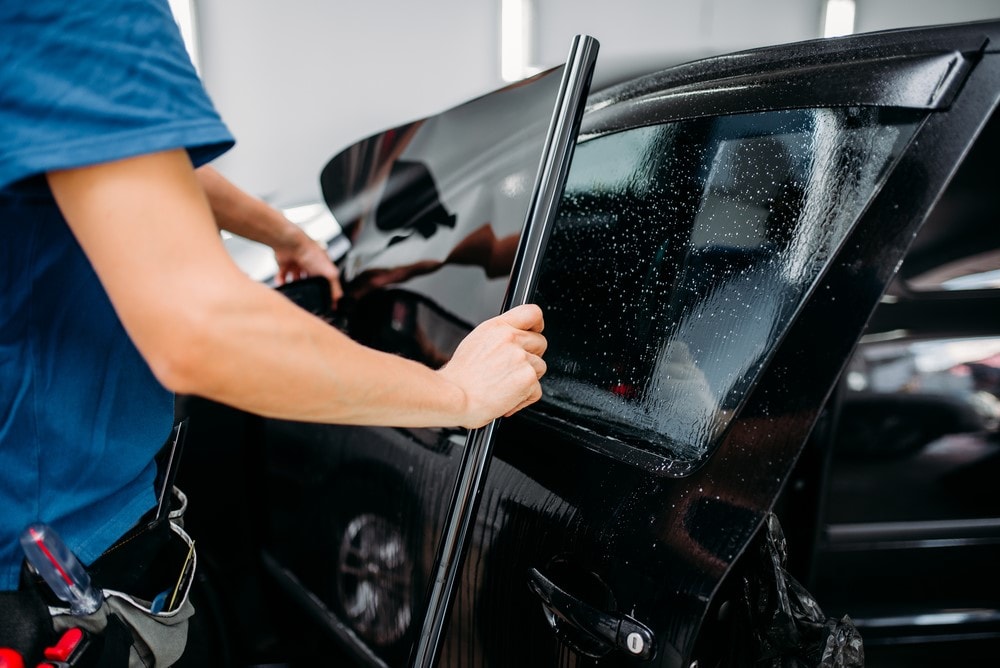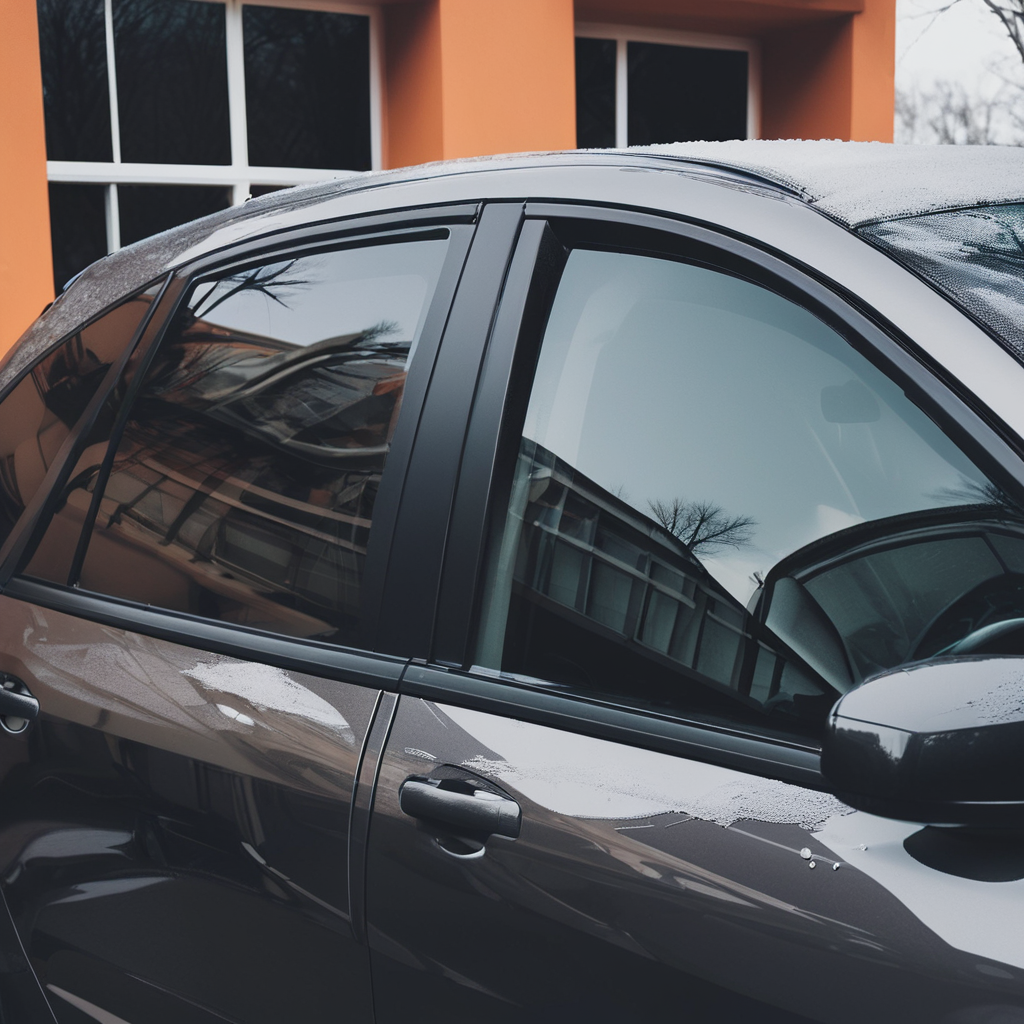Auto Window Tinting: Tips for Preserving an Expert End Up
Wiki Article
Window Tinting Laws and Guidelines: What You Required to Know Prior To Tinting Your Auto
Before proceeding with home window tinting for your lorry, it is important to familiarize on your own with the diverse legislations and standards that regulate this method throughout various states. These guidelines determine the allowable degrees of tint darkness, typically determined by visible light transmission (VLT) portions, and include certain terms for front windshields focused on making sure roadway security. Furthermore, certain jurisdictions may offer clinical exceptions for people with qualifying problems. Understanding these complexities can save you from possible lawful implications, however what are the details regulations in your state?Introduction of Window Tinting Rules
Window tinting regulations are often subject to variation across different territories, showing local regulations and safety considerations. These legislations dictate the permissible degrees of tint darkness and reflectiveness on car home windows, guaranteeing that vehicle drivers preserve adequate exposure while also protecting against damaging UV rays and warm.The majority of policies classify home window tinting based upon the Visible Light Transmission (VLT) percentage, which suggests the quantity of light that can travel through the window. Typically, lower VLT percentages indicate darker colors. Legislations usually differentiate in between the front, side, and rear windows, with stricter restrictions used to the front windscreen to boost security for both the chauffeur and other roadway customers.
Furthermore, some jurisdictions enforce restrictions on the reflectivity of the color, stopping too much glare that might hinder presence. Exceptions to these laws may exist for individuals with certain clinical problems needing added sun security. Conformity with home window tinting regulations is critical, as violations can result in penalties, compulsory removal of the tint, and prospective boosts in insurance costs. For that reason, it is crucial for car proprietors to acquaint themselves with local laws before proceeding with home window tinting installations.
State-by-State Tint Rules
Recognizing the details home window tinting policies in each state is vital for vehicle proprietors looking for to abide by the legislation. Each state in the united state has actually established its very own collection of guidelines regulating home window tinting, which can differ dramatically. These policies commonly dictate the permitted levels of tint darkness, the types of home windows that can be tinted, and any kind of clinical exemptions that may use.For example, states like California have stringent constraints on tint darkness for front home windows, while others, such as New Mexico, might enable darker colors. Furthermore, particular states mandate particular exposure portions for numerous windows, including the windscreen, front side home windows, and back home windows. It is essential for auto proprietors to familiarize themselves with their state's regulations to avoid potential fines or penalties.
Furthermore, some states might call for a qualification sticker label to be placed on colored home windows, showing conformity with state legislations. Failing to stick to these regulations not just risks legal consequences however can likewise affect safety and security and visibility while driving. For that reason, lorry proprietors ought to perform comprehensive study or speak with neighborhood authorities to ensure complete understanding and conformity with state-by-state tint regulations.
Allowed Tint Levels and Types
Numerous car proprietors may be stunned to learn that permitted tint levels and types vary widely throughout different states. Each state has actually established its own guidelines concerning the acceptable darkness and reflectivity of home window tint, usually measured by Visible Light Transmission (VLT) percents. VLT describes the amount of light that can travel through the colored windows; thus, a lower percent suggests a darker color.
Moreover, the kinds of tint materials permitted can vary, with some states restricting mirror-like or metallic coatings. It is vital for car proprietors to familiarize themselves with their state's specific regulations to guarantee compliance. Non-compliance can cause fines, obligatory elimination of the color, or various other lawful consequences, making it crucial to understand these guidelines prior to continuing with installation.
Medical Exceptions for Tinting
While not all states offer allowances for medical exemptions pertaining to window tinting, those that do identify the necessity for specific individuals to improve presence and comfort as a result of medical conditions. Various click reference medical problems, such as lupus, skin cancer, and certain eye conditions, can make individuals specifically conscious sunlight. Subsequently, these individuals may require darker tints to safeguard themselves from hazardous UV rays and glare.
It is necessary to note that also with a medical exemption, there might still be constraints on the level of color allowed. Conformity with state laws ensures that people are both secured and within legal limitations. Those thinking about medical exceptions must call their regional Department of Motor Vehicles or equivalent authority to recognize the procedures and requirements required to look for an exemption successfully.
Penalties for Non-Compliance
Falling short to follow window tinting legislations can cause substantial penalties, which vary by state. Police are encouraged to issue citations for lorries that do not abide by the defined tinting regulations. These penalties usually consist of penalties, which can range from small total up to a number of hundred dollars, depending on the extent of the offense and the state in concern.In some territories, repeated offenses might lead to rising fines or extra fines, such as mandatory court appearances. Furthermore, non-compliance may demand the elimination of unlawful tinting, often at the owner's cost. In extreme instances, habitual wrongdoers may deal with suspension of their vehicle registration until compliance is attained.
Furthermore, insurance policy ramifications may emerge from obtaining numerous citations for home window color offenses. Insurance providers might watch such infractions as an indicator of riskier actions, possibly bring about raised premiums or problem in protection.
To avoid these charges, it is crucial for lorry proprietors to familiarize themselves with their neighborhood home window tinting regulations and guarantee that their vehicle complies (Window Tinting). This proactive method not only stays clear of legal ramifications yet also promotes road security
Verdict

Most regulations identify home window tinting based on the Visible Light Transmission (VLT) portion, which shows the quantity of light that can pass with the window. Compliance with home window tinting laws is essential, as violations can result in fines, obligatory removal of the color, and possible boosts in insurance premiums.Comprehending the certain window tinting regulations in each state is vital for automobile proprietors looking for to conform with the law. These laws frequently dictate the allowable degrees of color darkness, the kinds of home windows that can be tinted, and any clinical exemptions that may use.
For instance, states like The golden state have stringent limitations on color darkness for front windows, while others, such as New Mexico, may permit darker see here colors.
Report this wiki page